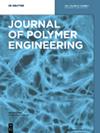纤维素球纳米复合材料在水净化吸附剂中的形成和表面改性研究进展综述
IF 1.7
4区 工程技术
Q4 POLYMER SCIENCE
引用次数: 0
摘要
水污染是一个全球关注的问题,需要通过水净化有效和可持续的解决方案。吸附法是一种很受欢迎的水处理方法,因为它价格便宜,性能好。虽然商品活性炭是普遍首选的吸附吸附剂,但其广泛使用受到高成本和塔式吸附遇到的挑战的影响。生物聚合物,如纤维素及其衍生物,由于其独特的特性,有可能取代昂贵的吸附剂。近年来,纤维素球纳米复合材料作为一种有前途的吸附剂受到了极大的关注,因为它们能够克服使用粉状吸附剂时遇到的挑战。为了制造纤维素珠,纤维素纤维从其来源分离,溶解在适当的溶剂中,形成球形颗粒,随后通过酯化,氧化,交联剂等改性来提高其吸附能力。本文综述了三维结构纤维素纳米复合材料的形成和表面改性的最新进展。本文综述了改性纤维素球的制备及其对不同污染物的高吸附能力。预计纤维素珠作为工业环境中的生物吸附剂,不久将成为较昂贵吸附剂的低成本替代品。本文章由计算机程序翻译,如有差异,请以英文原文为准。
Recent development in the formation and surface modification of cellulose-bead nanocomposites as adsorbents for water purification: a comprehensive review
Abstract Water pollution is an issue of global concern that demands effective and sustainable solutions through water purification. Adsorption is a popular method for water treatment because it is inexpensive and has a high performance rate. Although commercial activated carbon is the generally preferred adsorbent for adsorption, its widespread use is affected by the high cost and challenges encountered during column adsorption. Biopolymers like cellulose and its derivatives have the potential to replace expensive adsorbents due to their unique characteristics. In recent years, cellulose-bead nanocomposites have gained significant attention as promising adsorbents due to their ability to circumvent the challenges encountered when using powdered adsorbents. To fabricate cellulose beads, cellulose fiber is separated from its source, dissolved in appropriate solvents, shaped into spherical particles and subsequently modified (via esterification, oxidation, crosslinking agents, etc.) to improve its adsorption capacity. This comprehensive review paper presents a detailed analysis of the recent development in the formation and surface modification of 3-D structured cellulose nanocomposites. The outcome of this review on modified cellulose-bead demonstrates their successful fabrication and high adsorption capacities for different contaminants. It is anticipated that cellulose beads, as a bio-adsorbent in industrial settings, will be a low-cost alternative to the more expensive adsorbents shortly.
求助全文
通过发布文献求助,成功后即可免费获取论文全文。
去求助
来源期刊

Journal of Polymer Engineering
工程技术-高分子科学
CiteScore
3.20
自引率
5.00%
发文量
95
审稿时长
2.5 months
期刊介绍:
Journal of Polymer Engineering publishes reviews, original basic and applied research contributions as well as recent technological developments in polymer engineering. Polymer engineering is a strongly interdisciplinary field and papers published by the journal may span areas such as polymer physics, polymer processing and engineering of polymer-based materials and their applications. The editors and the publisher are committed to high quality standards and rapid handling of the peer review and publication processes.
 求助内容:
求助内容: 应助结果提醒方式:
应助结果提醒方式:


